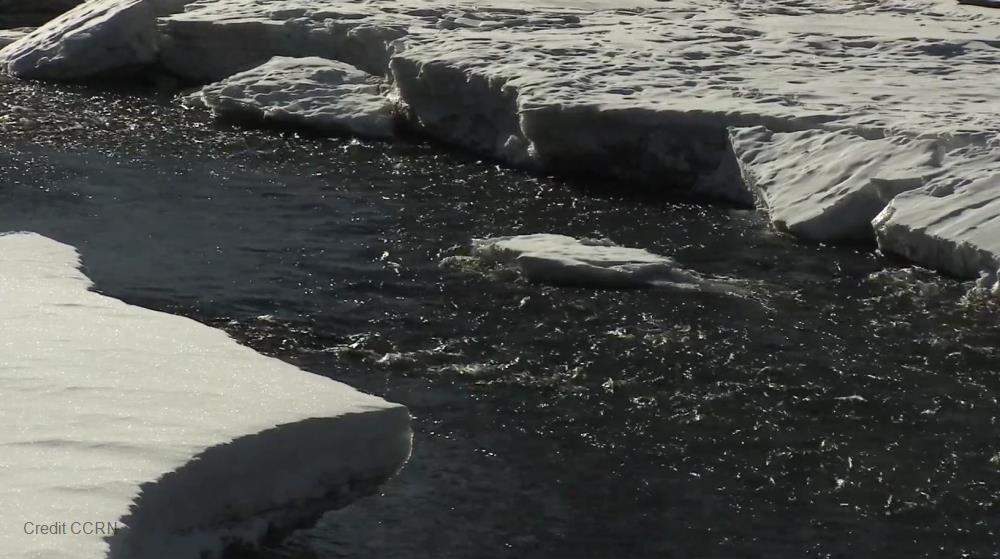
Related items loading ...
Section 1: Overview
Name of Research Project
|
Related Project
|
Part
|
|
GWF-IMPC: Integrated Modelling Program for Canada
|
|
|
|
|
|
|
|
Program Affiliations
Related Research Project(s)
|
GWF-IMPC: Integrated Modelling Program for Canada | |
Dataset Title
A Bias-Corrected 3-hourly 0.125 Gridded Meteorological Forcing Data Set (1979 - 2016) for Land Surface Modeling in North America
Additional Information
Creators and Contributors
|
Howard Wheater | Principal Investigator | | |
Elvis Asong | Originator | | |
Mohamed Elshamy | Collaborator | | |
Alain Pietroniro | Collaborator | | |
John Pomeroy | Collaborator | | |
Abstract
Cold regions hydrology is very sensitive to the impacts of climate warming. More physically realistic and sophisticated hydrological models driven by reliable climate forcing can provide the capability to assess hydrologic responses to climate change. However, hydrological processes in cold regions involve complex phase changes and so are very sensitive to small biases in the driving meteorology, particularly temperature and precipitation. Cold regions often have sparse surface observations, particularly at high elevations that generate the major amount of runoff. The effects of mountain topography and high latitudes are not well reflected in the observational record. The best available gridded data in these regions is from the high resolution forecasts of the Global Environmental Multiscale (GEM) atmospheric model and the Canadian Precipitation Analysis (CaPA) reanalysis but this dataset has a short historical record. The EU WATCH ERA-Interim reanalysis (WFDEI) has a longer historical record, but has often been found to be biased relative to observations over Canada. The aim of this study, therefore, is to blend the strengths of both datasets (GEM-CaPA and WFDEI) to produce a less-biased long record product (WFDEI-GEM-CaPA). First, a multivariate generalization of the quantile mapping technique was implemented to bias-correct WFDEI against GEM-CaPA at 3h x 0.125ᵒ resolution during the 2005-2016 period, followed by a hindcast of WFDEI-GEM-CaPA from 1979. The variables (units) available are specific humidity, precipitation (kg m-2 s-1), surface_air_pressure (Pa), Surface Downwelling Longwave Radiation (W m-2), surface_downwelling_shortwave_flux_in_air (W m-2), Surface Downwelling Shortwave Radiation (W m-2), wind speed (m/s) and Air Temperature (K). Note that this dataset was created using a 365-day calendar, hence leap years have a missing day. These data are in NetCDF format and can be downloaded via the Cuizinart Platform (
http://cuizinart.io) by selecting dataset labelled wfdei-gem-capa.
Purpose
This dataset provides an improved set of forcing data that can be used in hydrological modelling over most of North America. The aim of this study is to blend the strengths of both datasets (GEM-CaPA and WFDEI) to produce a less-biased long record product (WFDEI-GEM-CaPA). This data set will be used to support the objectives under the Global Water Futures Program funded by Canada First Research Excellence Fund.
Plain Language Summary
Provides a bias-corrected 3-hourly 0.125 gridded meteorological forcing data set (1979 ? 2016) for land surface modelling in North America.
Keywords
|
Air temperature |
Humidity |
Hydrology |
Most of North America |
Precipitation |
Radiation |
Wind speed |
Citations
Asong, Z. E., Wheater, H., Pomeroy, J., Pietroniro, A., & Elshamy, M. (2018). A Bias-Corrected 3-hourly 0.125 Gridded Meteorological Forcing Data Set (1979 ? 2016) for Land Surface Modeling in North America. Waterloo, Canada: Canadian Cryospheric Information Network (CCIN). (
https://dx.doi.org/10.20383/101.0111).
Section 3: Status and Provenance
Dataset Version
1
Dataset Creation Date
Status of data collection/production
Dataset Completion or Abandonment Date
Data Update Frequency
Creation Software
Primary Source of Data
Other Source of Data (if applicable)
Data Lineage (if applicable). Please include versions (e.g., input and forcing data, models, and coupling modules; instrument measurements; surveys; sample collections; etc.)
Section 4: Access and Downloads
Access to the Dataset
Terms of Use
Does the data have access restrictions?
Downloading and Characteristics of the Dataset
Download Links and Instructions
Total Size of all Dataset Files (GB)
File formats and online databases
Other Data Formats (if applicable)
List of Parameters and Variables


 GWFNet
GWFNet Master
Master Data
Data Research
Research Map
Map
 Advanced
Advanced . . .
. . .

 Metadata Editor
Metadata Editor
 Record List
Record List
 Alias List Editor
Alias List Editor
 Legacy sites
Legacy sites